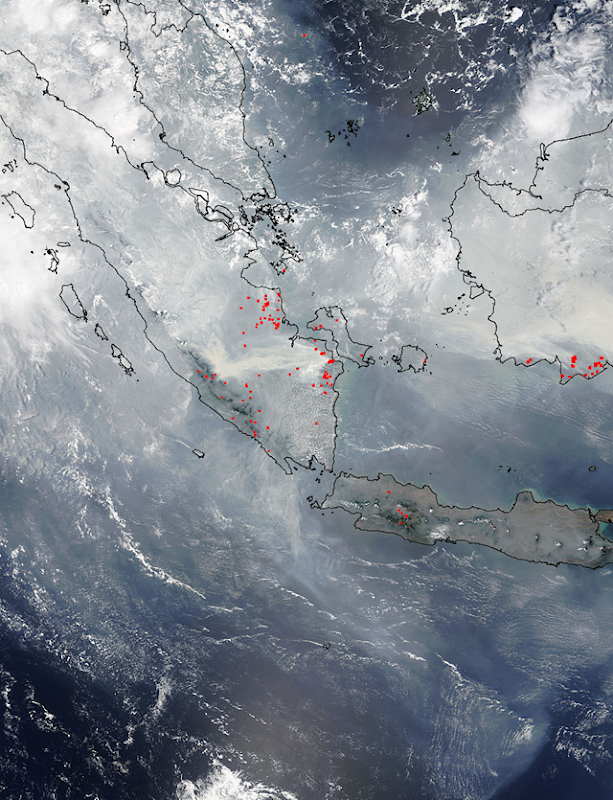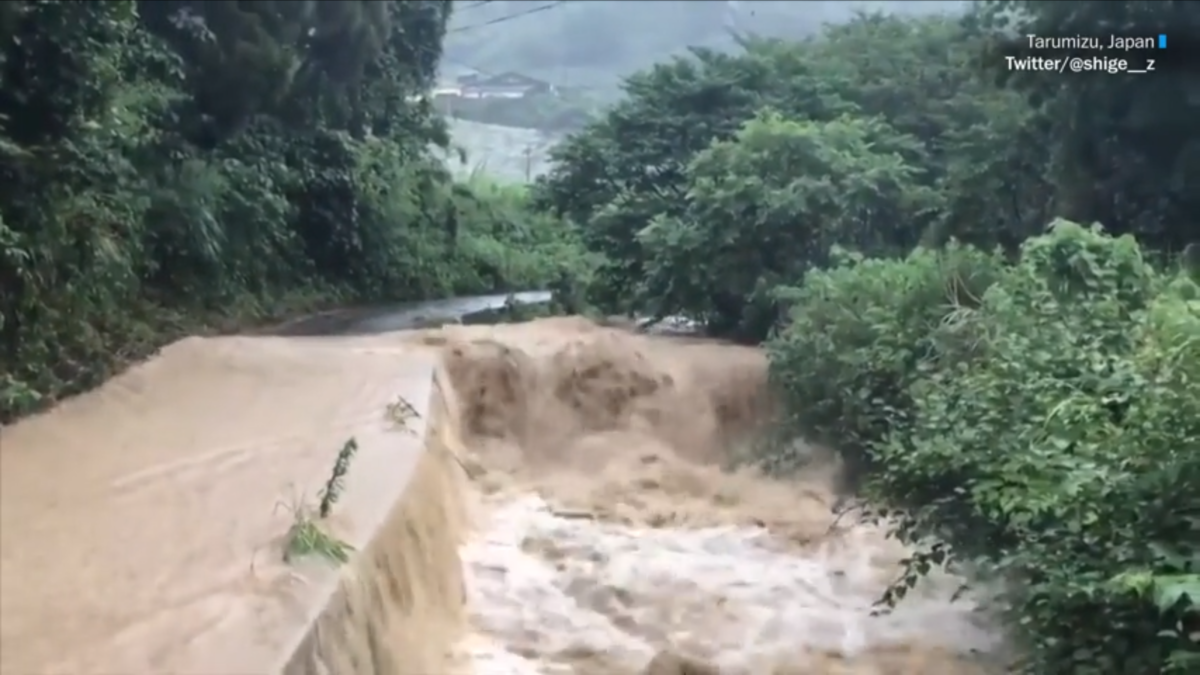Photo gallery: Satellite views of smoke and fires in Indonesia, October 2015
By Adam Voiland
19 October 2015 (NASA) – Heavy smoke continued to pour from peat fires in Borneo, Indonesia, when the Moderate Resolution Imaging Spectroradiometer (MODIS) on NASA’s Aqua satellite captured this image on 19 October 2015. Red outlines indicate hot spots where the sensor detected unusually warm surface temperatures associated with fires. Gray smoke hovers over the island and has triggered air quality alerts and health warnings in Indonesia and neighboring countries. Small cumulus clouds are visible along Borneo’s southern coast. The lower image shows a more detailed view of some of the fires. Fires are a common occurrence in Borneo in September and October because farmers engage in “slash and burn agriculture,” a technique that involves frequent burning of rainforest to clear the way for crops or grazing animals. In southern Borneo, the intent is often to make room for new plantings of oil palm and acacia pulp. Many of the fires are burning in areas with soils underlain with peat—a soil-like mixture of partly decayed plant material formed in wetlands. Peat fires tend to be difficult to extinguish, often smoldering under the surface for months. In comparison to other types of fires, peat fires release unusually large amounts of certain pollutants. For instance, peat fires release three times as much carbon monoxide and ten times as much methane as savanna fires, according to emission factors used by Vrije Universiteit Amsterdam scientist Guido van der Werf to quantify the amount of pollution released by the fires. According to Van der Werf, the fires in Indonesia have emitted an estimated 1.1 billion tons of carbon dioxide equivalents so far this year. That is more than the average annual emissions of Germany. MODIS sensors on the Terra and Aqua satellites have detected fires burning in southern Sumatra since early September. Scientists monitoring the fires expect the fires to continue burning until the monsoon rains arrive at the end of October. However, they caution that the dry season could be unusually long in Indonesia this year because of the strong El Niño present in the Pacific Ocean.References
- NASA Earth Observatory (2015, September 27) Smoke Blankets Indonesia. Accessed October 19, 2015.
- NASA Earth Observatory (2015, September 27) El Niño Strengthening. Accessed October 19, 2015.
Further Reading
- Akagi, R.J. et al (2011) Emission factors for open and domestic biomass burning for use in atmospheric models. Atmospheric Chemistry and Physics, 11, 4039-4072.
- Gaveau, D. et al (2014, May 7) Major atmospheric emissions from peat fires in Southeast Asia during non-drought years: evidence from the 2013 Sumatran fires. Scientific Reports, (4), 6112.
- Motherboard (2015, January 12) How Climate Change is Fueling the World’s Longest-Burning Fires. Accessed October 19, 2015.
- Mashable (2015, October 17) Indonesia’s peat fires have released more greenhouse gases than Germany does in an entire year. Accessed October 19, 2015.
- The New York Times (2010, August 20) The Fires Down Below. Accessed October 19, 2015.
- Time (2015, October 8) Watch Eerie Drone Footage of Indonesia’s Vast Forest Fires. Accessed October 19, 2015.
- Van der Werf (2015, October 19) Indonesian fire season progression. Accessed October 19, 2015.
- World Resources Institute (2015, October 8) Indonesia’s Fire Outbreaks Producing More Daily Emissions than Entire US Economy. Accessed October 19, 2015.
NASA image Jeff Schmaltz (LANCE MODIS Rapid Response) and Adam Voiland (NASA Earth Observatory). Caption by Adam Voiland.
Smoke from Indonesia forest fires, 24 October 2015. Photo: LANCE MODIS Rapid Response
Smoke from Indonesia forest fires, 22 October 2015. Photo: LANCE MODIS Rapid Response
Smoke and forest fires in southern Sumatra and Borneo, 21 October 2015. Photo: LANCE MODIS Rapid Response
Smoke and forest fires in southern Sumatra, 20 October 2015. Photo: LANCE MODIS Rapid Response
Smoke and forest fires in southern Borneo, 19 October 2015. Photo: LANCE MODIS Rapid Response








That's a nearly unbelievable level of smoke. Would not want to try to live through that.
This region just went through something less serious and it was pretty bad at times. I've heard that our local fires are still burning, months later but the air quality, at least here in N. Idaho is much better then it was.
The future means even more fires. These contributions to atmospheric aerosols, carbon dioxide and other gasses to the atmosphere need to be considered in climate change models.